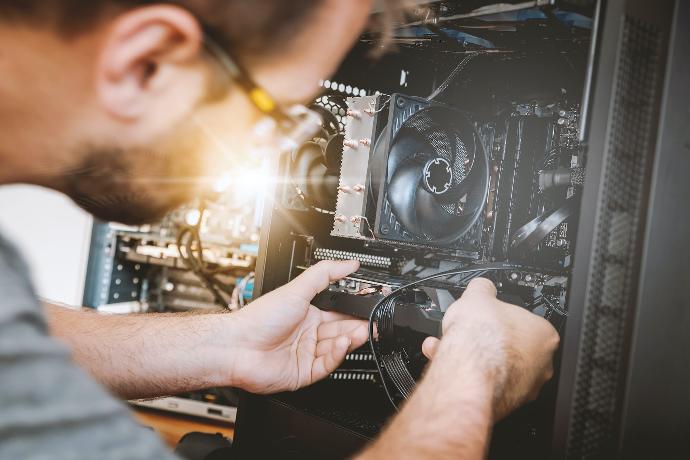What Is Manufacturing Process?
Manufacturing process includesconverting raw materials or components into finished products on a large scale. It involves a series of steps and operations to transform the inputs into the desired output. The steps may vary depending on the manufacturing industry and the specific product being manufactured.
Mains manufacturing modules you must have
DESIGN
The first step in manufacturing is product design. This involves conceptualizing and creating a detailed design of the product, including its dimensions, materials, and specifications. Design may also involve prototyping and testing.
PROCUREMENT
Once the product is finalized, the next step is to procure the necessary raw materials, components, and equipment required for manufacturing. This involves sourcing suppliers, negotiating contracts, and ensuring the availability of required resources.
RAW MATERIAL PREPARATION
Raw materials need to be prepared before they can be used in the manufacturing process. This process may include cleaning, cutting, shaping, or treating the raw materials to make them suitable for production.


ASSEMBLING OR PRODUCTION
In this step, raw materials and components are assembled or processed to create the final product. So many tasks are carried out throughout this process such as machining, welding, casting, or molding depending upon the nature of the product.
QUALITY CONTROL
Throughout the mass productionprocess, quality control measures are implemented to ensure that the products meet the desired standards. This may incorporate inspections, testing, and quality insurance techniques to identify and rectify any defects or deviations.
PACKAGING
Once the products are manufactured and pass the quality control checks, they are prepared for packaging. Packaging includes protecting the product, labeling, and ensuring it is ready for distribution.
DISTRIBUTION AND LOGISTIC
The finished products are then distributed to the intended market or customers. This step involves logistics planning, transportation, warehousing, and inventory management to ensure timely delivery of the products.
SALES AND MARKETING
Throughout the mass productionprocess, quality control measures are implemented to ensure that the products meet the desired standards. This may incorporate inspections, testing, and quality insurance techniques to identify and rectify any defects or deviations.
CUSTOMER SUPPORT
After the product is sold, manufacturers often provide customer support services to address any issues, offer maintenance or repairs, and ensure customer satisfaction.

Various Types of Manufacturing Processes
REPETITIVE MANUFACTURING:
Repetitive manufacturing refers to the production of a standardized product in large quantities with a consistent production flow. It involves the continuous production of identical or similar products without significant variations. This type of manufacturing process is often used for items with high demand and stable designs, such as consumer electronics, automobiles, and household appliances. The production line is typically designed for high efficiency and minimal changeover time between products.
DISCRETE MANUFACTURING:
Discrete manufacturing involves the production of distinct items that can be counted and identified as separate units. Each product has its own unique characteristics and often goes through various assembly lines and manufacturing operations. Examples of discrete manufacturing include the production of machinery, furniture, toys, and electronic devices. The manufacturing process may involve different stages, such as component fabrication, assembly, testing, and packaging.
JOB SHOP MANUFACTURING:
Job shop manufacturing refers to a flexible manufacturing process, where each product is uniquely designed and manufactured according to customer satisfaction. It involves the production of custom-made or low-volume products that require specialized skills or equipment. Job shops often handle a wide variety of products, and the manufacturing process is highly customized for each other. Examples include custom machine parts, prototypes, and specialized components.
CONTINUOUS MANUFACTURING:
Continuous manufacturing is a process where products are produced without interruption and in a continuous flow. This process includes the use of automated systems and machinery to produce goods without stopping the production line. Continuous process manufacturing is commonly used in industries such as chemicals, Petroleum refining, and food processing. The process is characterized by a constant input of raw materials and continuous output of finished products.
BATCH PROCESS MANUFACTURING:
Batch process manufacturing involves the production of goods in batches or groups. Each batch consists of a specific quantity of a product, and the manufacturing process follows a predefined set of operations. After one batch is completed, the equipment is cleaned and set up for the next batch. Batch processing is often used for products that require specific conditions, such as pharmaceuticals, food products, and cosmetics. It allows for more flexibility in terms of production volume and product customization.
A Look at the Additional Manufacturing Processes
- Casting: The casting process includes pouring liquid material (usually metal or plastic) into a mold and allowing it to solidify to create the desired shape.
- Forming: Refers to processes that shape solid materials without melting them, including processes like rolling, bending, and stamping.
- Machining: Utilizes cutting tools to remove material from a workpiece to achieve the desired shape and size. Examples include milling, turning, drilling, and grinding.
- Joining: Involves connecting two or more components or parts together, such as welding, brazing, soldering, and adhesive bonding.
- Additive Manufacturing: Also known as 3D printing, this process builds objects layer by layer using computer-controlled machines. It's widely used in prototyping and customized production.
- Molding: Similar to casting but often used for plastics and other non-metallic materials. It includes processes like injection molding and blow molding.
- Forming/Fabrication: Includes processes like sheet metal forming, where metal sheets are shaped into various products.
- Assembly: The process of putting together various components to create a final product. It involves joining, fastening, and integrating parts.
These different types of production processes offer various advantages and are suitable for different product types and production requirements.
Odoo MRP features for manufacturing processes
Odoo MRP (Material Requirements Planning)module offers a range of features that enable efficient management of manufacturing operations. Some of the features include:
- Work orders: The ability to create and launch production orders for items required in the final assembly of products.
- Bill of Materials (BOM) management: The ability to manage and maintain the list of raw materials, sub-assemblies, and finished products required to produce the final product.
- Inventory management: Odoo MRP offers inventory management features that help you gain insights into your inventory levels, enable stock adjustments, and manage stock movements between different locations.
- Barcode support: Barcode support helps speed up manufacturing operations by automating the scanning of product and stock codes, thereby reducing manual input errors and improving accuracy.
- Planning and scheduling: Odoo MRP allows you to schedule production orders and manage the entire manufacturing process from start to finish.
These features help manufacturing firms streamline and automate manufacturing processes, resulting in increased efficiency and productivity.
50,000+ companies run Odoo to grow their businesses.
Join us and make your company a better place.